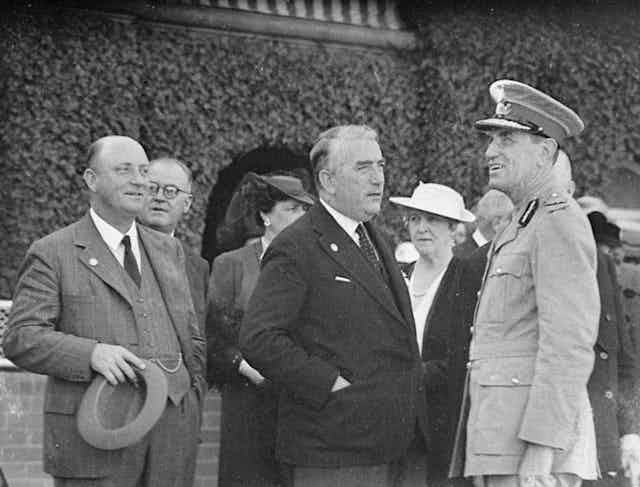The Conversation is running a series of explainers on key moments in Australian political history, looking at what happened, its impact then, and its relevance to politics today.
It has become an established fact of Australian politics that when the non-Labor side of politics is in power, the government will be a coalition of the Liberal Party and the National Party. This has been the case for almost 100 years, since the formation of the Country Party in 1920.
Even on those occasions when the Liberals have won a House of Representatives majority in their own right, the Coalition has held.
What happened?
It is also true that when the then Nationalist Party and the then Country Party came together in coalition in 1922, the Country Party had much more clout than it has today. In the 1922 federal election, the Nationalists won 35% of the vote and 26 seats in a 75-seat House of Representatives. The Country Party won 12.5% of the vote and 14 seats, including seats in Tasmania.
The price Country Party leader Earle Page demanded for coalition was the political execution of Prime Minister Billy Hughes, and the treasurer’s job. He got both, creating the Bruce-Page government.

When Robert Menzies became leader of the United Australia Party in 1939 following the death of Joe Lyons, Page attempted the same trick again. He made a savage personal attack on Menzies and refused to serve under him – only this time the Country Party refused to follow suit, and replaced Page as leader.
The political reality was that to form an effective political relationship, any non-Labor prime minister needed to have a good working relationship with the Country Party. Menzies understood this.
When Menzies put together the bits and pieces of the non-Labor political forces following the collapse of the United Australia Party and formed the Liberal Party in 1944, he knew the Liberal Party would not be able to govern in its own right.
What was its impact?
At the 1949 election, which swept Menzies to power, the Liberal Party won 55 seats in a 121-seat House of Representatives. The Country Party won 19 seats.
Country Party leader Arthur Fadden became treasurer and remained so until 1958, when new leader John McEwen chose not to move to Treasury. McEwen’s influence in non-Labor governments, especially in relation to tariff matters, was considerable until his retirement in 1971. His antipathy to William McMahon effectively forced him out of the contest to elect a successor to Harold Holt in early 1968.
During this period, the Country Party could use its influence to shape Coalition policy. It did so because it had strong electoral support, which kept its numbers in the House of Representatives hovering around 20.
Liberals seemed to be quite happy to acquiesce in that influence, especially as Menzies and his immediate successors – with the possible exception of McMahon – were not opposed to government regulation of the economy.
Over time, Australia’s demography worked against the Country Party. The number of people living in urban areas has always been high in Australia, but the numbers have swung even more against rural areas. The size of the House of Representatives increased in the 1980s to 148 but the number of Country Party members remained static.
In 1982, it officially became National Party policy to indicate it was not merely a sectional party. This was followed in the 1980s by an attempt by Queensland Premier Joh Bjelke-Petersen to create an urban base for the Nationals in Brisbane. This had some initial success, but ultimately failed.

What are its contemporary implications?
The Nationals remain a country-based party in an Australia in which urban areas experience the greatest growth in population. Since the 2016 election, the Nationals have held 16 seats in a 150-seat House of Representatives.
What this means is that National Party policy will not disappear in the medium term, unless the party agrees to a union with the Liberals. The Liberals will have to take account of the wishes of the Nationals, up to a point.
However, it is clear that current Nationals leader Barnaby Joyce does not have the power to veto particular individuals from the leadership of the Liberal Party.
It is also clear that a Nationals leader will not be able to influence policy in the way McEwen did. Joyce may be a sort of agrarian populist, but times have changed – and the Liberal Party is no longer the party it was in the 1950s and 1960s.
It all comes down to numbers. The Nationals have relatively fewer seats in parliament than did the old Country Party 50 years ago. So, their capacity to influence what the government does has diminished.
Nevertheless, the Liberals need the Nationals if they are to form stable governments. They need each other. But, ultimately, the Liberal Party can only become the more powerful part of the relationship.

